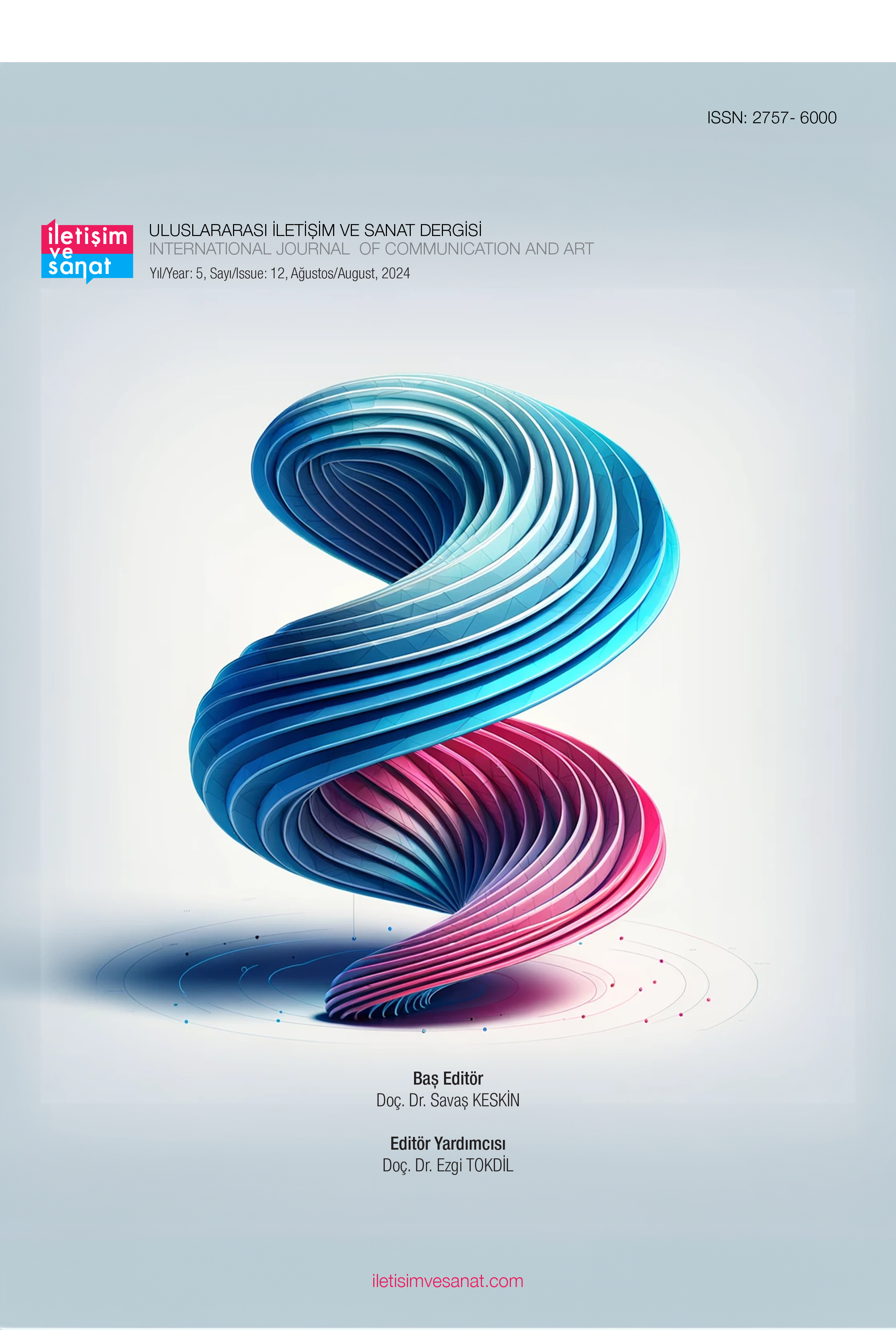Author :
Abstract
Bu araştırma, Laszlo Nagy'ın "Sarı Daire" adlı eserinin geometrik formlarının antropolojik ve resimsel açılardan kolektif anlamını detaylı bir şekilde incelemeyi amaçlamaktadır. Modern sanatın özünde yatan felsefi ve estetik ilkeler, geleneksel sanatın kalıplarını zorlayarak yeni düşüncelerin ve deneysel formların ifade edilmesine olanak tanımaktadır. Bu temel ilkeler ve dönüştürücü güç, eserin incelenmesi bağlamında araştırmaya dahil edilmiştir. Çalışma, eserin tasarım ilkelerinin kompozisyon yöntemiyle detaylı bir biçimde illüstrasyon çizimleriyle analiz edilmesini sağlamaktadır. Tasarım elemanları bir tasarımı oluştururken önceden belirlenmiş, sistematik bir döngüyü ifade etmektedir. Çizgisel-dokusal denge, oran-orantı, kontrast ve bütünlük-vurgu gibi temel tasarım unsurları üzerinde durularak, eserin içsel yapısının incelenmesi ve anlaşılması amaçlanmaktadır. Araştırmacılar, dijital ortamda oluşturulan tasarım ilkeleri üzerinden eserin formalist analizini gerçekleştirmişlerdir. Antropolojik inceleme ise, eserin geçmişteki insanların eylem ve düşüncelerine dair sağladığı bilgiyi günümüz insanının davranışlarını ve düşüncelerini anlamlandırmak için kullanmayı hedeflemektedir. Bu bağlamda, eserin resim perspektifinden ele alınarak görsellerin tasarım ilkeleriyle çözümlenmesi ve illüstrasyon aracılığıyla ifade edilen unsurların sanat eserinin estetik ve anlamsal unsurlarıyla etkileşimini incelemektedir. Tarihsel evrim ile eserin içsel yapısı arasındaki ilişkiyi anlamak ve bu simgelerin kolektif anlamını çözümlemek amacıyla yapılan çalışma, sanat eserinin derinliklerine inmeyi ve anlamını keşfetmeyi hedeflemektedir. Bu yöntemler, eserin zenginliklerini ve insanlık tarihindeki yerini daha iyi anlamamıza yardımcı olabilir. Bu şekilde, modern sanatın dönüştürücü gücü ve düşünsel derinliği, "Sarı Daire" adlı eser üzerinden akademik bir bakış açısıyla incelenmektedir.
Keywords
Abstract
This study aims to examine the anthropological and pictorial significance of the geometric forms in László Nagy's work "Yellow Circle" in detail. The philosophical and aesthetic principles inherent in modern art allow for the expression of new ideas and experimental forms by challenging the molds of traditional art. These foundational principles and transformative power have been included in the research context for the analysis of the artwork. The study facilitates a detailed analysis of the design principles of the artwork through illustrative drawings with a focus on composition method. Design elements signify a predetermined, systematic cycle in forming a design. By focusing on fundamental design elements such as linear-textural balance, proportion, contrast, and unity-emphasis, the study aims to examine and understand the intrinsic structure of the artwork. Researchers have conducted a formalist analysis of the artwork through design principles created in a digital environment. The anthropological examination aims to use the knowledge provided by the artwork about the actions and thoughts of past humans to interpret the behaviors and thoughts of contemporary humans. In this context, the study examines the interaction of visual elements with the aesthetic and semantic aspects of the artwork by analyzing visuals with design principles and expressing elements through illustration. The study conducted aims to delve into the depths of the artwork and explore its meaning in order to understand the relationship between historical evolution and the intrinsic structure of the artwork and to decipher the collective significance of these symbols. These methods can help us better understand the richness of the artwork and its place in human history. Thus, the transformative power and intellectual depth of modern art are examined through an academic perspective using the artwork "Yellow Circle" as a lens.





